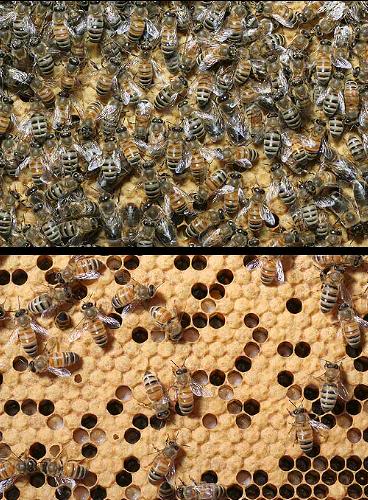
Back in 2013, I wrote about Colony Collapse Disorder (CCD), which described the massive die-off of honeybees worldwide, a phenomenon first observed in 2006. Some claimed that pesticides called neonicotinoids were killing the bees. Others pointed to fungi or parasites found in many hives that could be weakening and killing bees. Further speculation on CCD causes included:
- viruses attacking domesticated bee populations;
- wildflower and naturally occurring weeds domain loss and farm monoculture practices leading to bee nutritional deficits;
- declines in wild honey bee populations reducing the genetic pool to strengthen the species;
- apiarists that manage domestic beehives restricting the gene pool to bees bred for docility and high levels of honey production.
Environmentalists were alarmed and sought targets to blame. Pesticide producers were the focus of their anger and dismay. A world without honeybees was predicted by numerous “experts” and opinion-makers over the last two decades.
I was far from convinced that pesticides were the principal cause of declining domestic bee populations. In researching the topic I became convinced that the Varroa mite was likely a much larger player in causing CCD, facilitated by a narrowing gene pool in domestic honey bee populations making a much larger percentage vulnerable to the mite’s spread.
In the United States, an industry group, the National Honey Board, launched Project Apis to study honey bee health, nutrition and productivity. Their work includes:
- issues related to crop pollination, colony density and pollinator carrying capacity;
- developing better ways to detect Varroa mites in hive populations;
- breeding Varroa-mite resistant bees;
- addressing knowledge gaps about bee health and nutrition;
- creating strategies for the coexistence of honey bees and native bees in various landscapes;
- regulating and testing pesticides used for bee-attractive crops;
- measuring pesticide bee exposure throughout the year when used on different crops and under different foraging scenarios;
- developing our genetic understanding of bees and queen metrics to improve the breeding stock of domestic colonies.
The doom and gloom reports about CCD have appeared in the press regularly since the first published research describing the phenomenon. As late as February 2023, an article published in the peer-reviewed journal, Food Security, described the ongoing threat of CCD linked to pesticide exposure, heavy metal pollution, and biological stressors.
Yet, an article published in The Washington Post on March 29, 2024, paints a very different picture. It describes honeybees as the fastest-growing livestock segment in the United States with colony growth up 31% since 2007.
How could both of these differing conclusions be true? Aggressive management of bee colonies probably explains the latter statistic. It doesn’t necessarily mean that CCD has been defeated by science and a better understanding and managing of honeybee populations. Colonies continue to be lost. New treatments continue to be developed including using mRNA-based research to produce effective treatments for bee populations infected by the Varroa mite.
One reason to focus on viral and mite threats to domestic honeybees is the fallout that can happen to native bees. Eliza Grames, an entomologist at Binghamton University, in The Washington Post article notes that domesticated honeybees threaten the 4,000 native bee species in North America, about which 40% are vulnerable to extinction.
Grames helps lead EntoGEM, a citizen-science program that compiles data on insect populations and notes that pollinators are generally in decline at about a rate of 1 to 2%. Bees are not the only pollinators. The classification includes butterflies, moths, beetles, flies, midges and gnats.
If you are concerned about CCD and saving honeybees, the best thing each of us can do is create a flower-rich garden to help them thrive.








